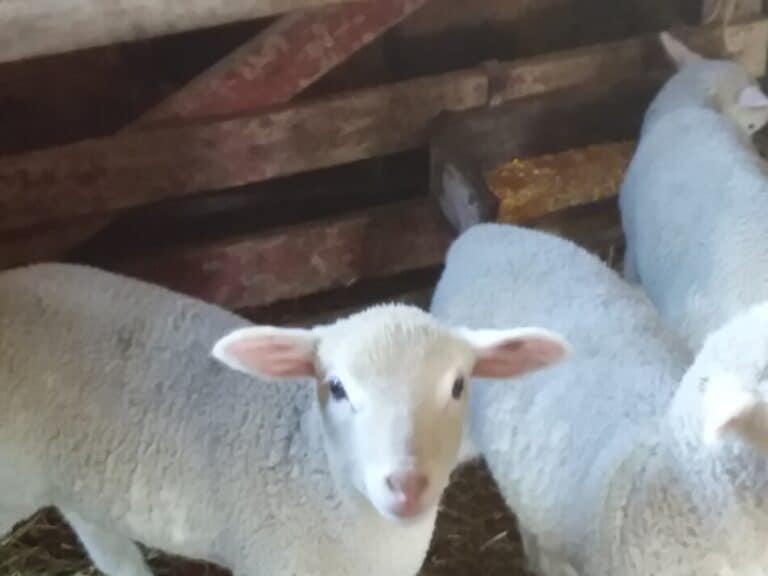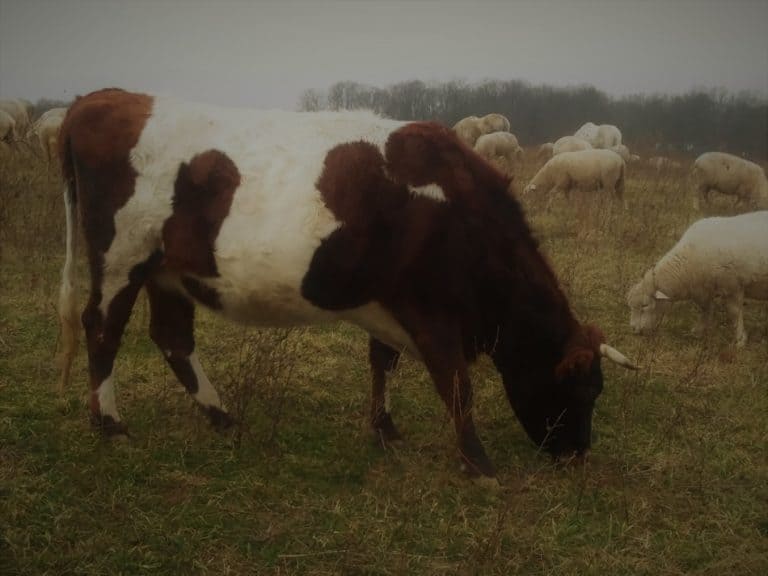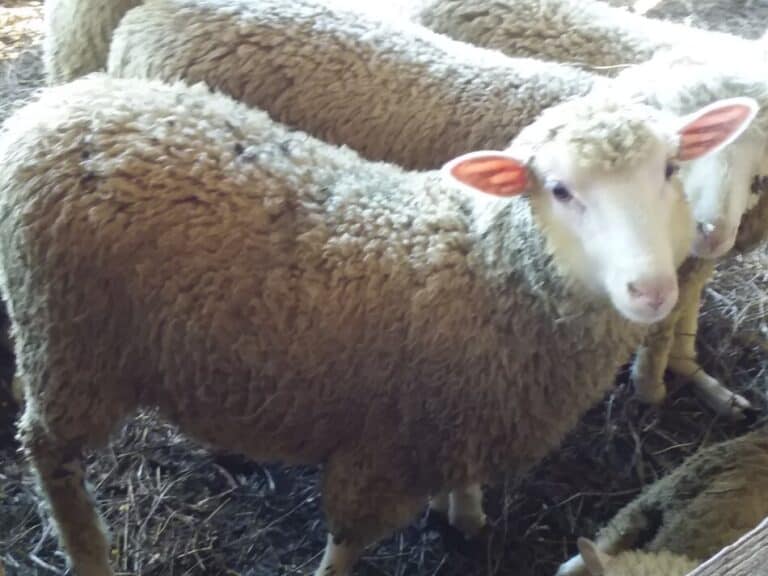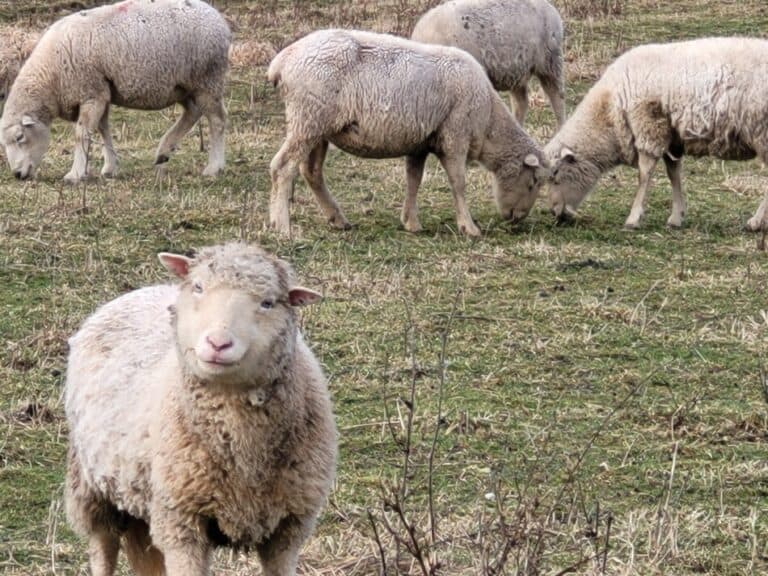Why Is Lamb Meat So Expensive?

Lamb is one of the healthiest meats available for you to buy, since it is not factory farmed and generally raised on pasture.
Lamb is easily raised in the U.S. and is a very small farm/family farm friendly livestock. Why is the price of lamb high compared to other meats?
Lamb meat is more expensive because lambs yield less total meat per animal, both in pounds and percent of live weight, and lambs are normally raised on grass, which requires acreage and management, rather than in a confinement system.
So, what’s with the price? It’s because of the lamb being smaller than a pig or a steer, but still having a high cost per pound live.
Is Raising A Lamb For Meat Worth It? goes into your budget and time needed to raise a lamb from feeder to freezer. Even if you are not planning to raise your own lambs, this will give you a good idea of what is required.
Lambs cost more to purchase per pound
Most lambs in the U.S. are purchased live weight by the pound. This means that a lamb weighing 100 pounds selling for $1.75 per pound is purchased for $175.00.
Rarely is the weight of the lambs such an easy number to use for your calculations but that should give you an idea of cost.
Read my article How Much Will My Lamb Sell For to see a more on finding and figuring live lamb prices.
Most slaughter houses would not want to spend all day at an auction waiting for a pen of lambs to sell, so they get animals from livestock dealers.
Getting a group of lambs from a specific farm is likely as well, but farm schedules and butchering needs may not line up on the same schedule.
It is common for a livestock dealer to attend the local auctions and purchase animals to fill orders for slaughter houses.
The dealer would then resell the lamb to the slaughter house for more than was paid-that’s where he makes his living.
This price will be added on to what you pay for the meat.
The butcher will get the lamb customer ready then charge accordingly.
The butcher must cover the cost of getting the lamb to him and the work he and his employees put into the meat getting it ready for you.
Additionally, a profit must be built into the price of the lamb, otherwise why run the business if there is no money to be made?
This pricing structure, paying the other people like haulers and buyers who worked to get the animal to the butcher, would be the same for all meat animals, not just lambs.
Lambs are older than other meat animals
So, why are lambs more money to purchase to begin with?
Well there are several reasons, the first one being that lambs are older than most other meat animals when they reach butchering weight.
The longer the farmer or rancher needs to keep the animal to get it to market weight the more it cost them in resources, time and money being the two biggest.
Here are a few common animals raised for meat and the ages that they reach market weight:
- broilers (meat chickens) 46 days
- pigs 5-6 months
- goats 4-6 months
- cattle 14-18 months (full size, feedlot steers, veal is younger, grass fed and finished is older)
Of the meat animals on this list, only cattle are usually older than lambs when they reach market weight.
Pros And Cons Of Sheep gives you some of the things we see when raising our sheep, both the good and the not so good!
Lambs are not commonly raised in factory farms
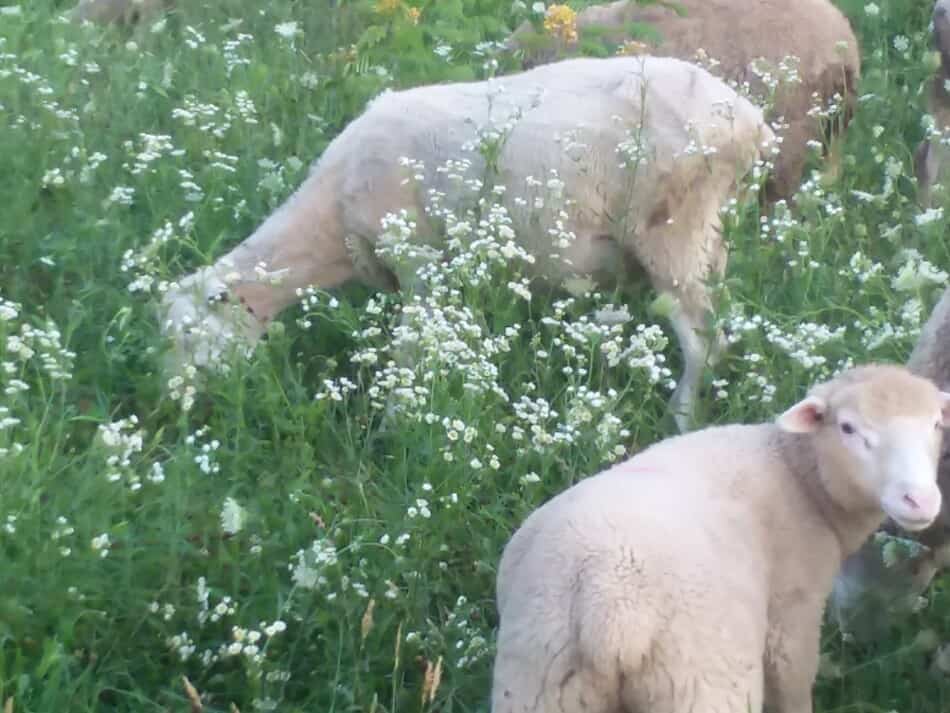
Cheap meat is raised in factory farm style environments. Lamb is not factory farmed.
This is great for the lambs but more for you to pay at the cash register.
Lambs are not raised in extreme confinement like most other meat animals raised in factory farms.
Lambs are sensitive to stress and will not grow well enough in a factory farm setting to make putting together an operation like a feed lot profitable.
Feed lots and other factory farm style operations count on being able to cram a lot of animals in a small space because more production per square foot equals more income per building.
This requires extensive facilities and reliance on medications to make it work.
Lambs don’t handle the stress of confinement well. Stress makes lambs grow slowly or just die. A dead or slow growing lamb doesn’t pay for a factory farm.
If lambs could handle the stress of extreme confinement, they would be factory farmable.
The result would be a lower price for lamb at the store, but not a healthier life for the lamb or higher quality meat for you.
This is what has happened to beef, pork and chicken prices.
Factory farming has made the price at the store for industrial meat pretty cheap.
Notice I just said the price at the store, leaving out the mountain of other problems that come with this “cheap” meat, topics for more articles for sure!
Meat yield is low per lamb
The second main reason lamb costs more than other meat is that the meat yield per lamb is low compared to other common meat animals in the U.S. (The meat yield of sheep and goats are about the same.)
For comparison-carcass yields of common animals are:
- 50% lambs and goats
- 60% beef cattle
- 65% pigs
- 70% meat chickens (broilers)
When a lamb is sold at 100 pounds live weight the carcass yield is 50% so 50 pounds.
The carcass yield is the weight of the carcass when it is hanging in the butcher shop cooler, no meat has been cut off yet.
Carcass yield is also called hanging weight, since the carcass is hanging in the cooler.
So you get 50 pounds of meat? No, you don’t. Of that 50 pounds of carcass 75% will be sellable cuts of meat, which works out to 37.5 pounds of lamb to sell to a customer.
What happened here? Depending upon how the carcass is cut most of the bones that are still included in the hanging weight will not be sold to customers.
There would also be non meat parts of the carcass that would need to be cut off like fat and tendons, that would not be sold to customers either.
Here’s my article all about figuring up the meat you will get when you have a lamb butchered, for anyone who wants to dig deeper into the numbers.
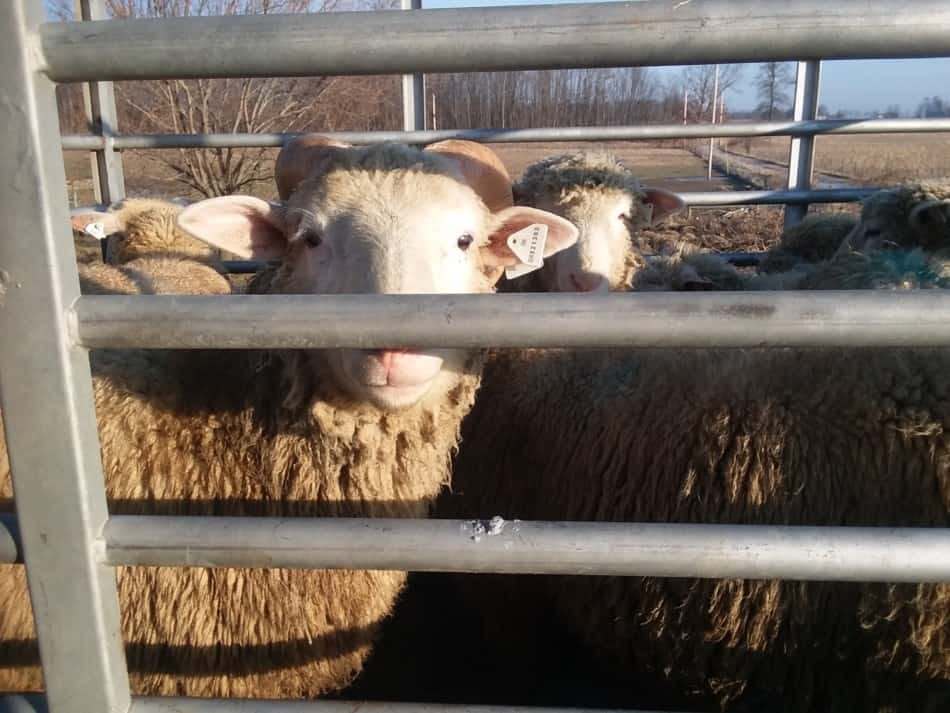
Cost of lamb meat
The cost of the lamb meat is going to be higher than other common meat animals in the U.S.
This higher cost is due to one of two factors:
- live lambs purchase price compared to weight
- products shipped in smaller amounts cost more per package.
Cost of the live lamb
Here is the main cost to lamb meat being higher than many other meats in the grocery store-purchasing the lamb itself is more expensive per pound than other animals.
Let’s look at some examples: a lamb purchased for $150 will get you 37.5 pounds of meat (this is explained in detail below).
Comparatively a pig purchased for the same $150 will get you 144 pounds of meat.
While it’s true the cost of processing the pig would be more in total than the total of the lamb processing, since the price for cutting and wrapping is per pound, the price per pound of pork is still much lower.
This is simply because the initial purchase price of $150 buys you so much more weight when you are buying a pig compared to buying a lamb.
Small amounts of anything cost more to handle
This is a per package comparison, of course. Small amounts of an item take just as much coordination, planning and paperwork as larger amounts yet will bring in less money to the store for the effort.
This is true for any product, food or otherwise.
Stores are always experimenting with new items to attract the attention and the money of customers.
Grocery stores especially seem to try to have a section of the store dedicated to the new popular eating plan.
However, this all takes time to set up and space in the store, both valuable things in a business, so the extra effort has to pay.
What exactly does this have to do with lamb? If your area commonly eats lamb, nothing. Demand, pricing and shipping are already worked out.
If lamb is not common fare in your town, introducing something new to customers is dicey (read costly). People are always looking for new stuff, but they will only pay a certain amount to experiment.
Since lamb would be new to your local grocery cooler, it will not have the benefits of economy that meats which ship in larger amounts will have.
A large standing order for beef or pork will have some bargaining power with it, not so with a small order of something new.

Buy a dressed lamb
Purchasing a dressed lamb (a whole lamb from the butcher) would save you some money over purchasing all of the pieces separately, but you would have to pay all at once.
Do the math, that means you are getting the ground meat and the highest dollar cuts all for the same price per pound if you buy the whole lamb!
The prices I have seen around here for having a lamb butchered are a $90.00 kill charge and $1.20-1.50 per pound to cut it and wrap it to your specifications.
So let’s say you want all of your meat done at the $1.50 per pound level.
37.5 pounds of meat x 1.50=56.25 for the cutting, wrapping and freezing of the meat. Add to that the $90 kill charge for a total of $146.25.
Remember that is money to the butcher shop, you also have to pay for the lamb.
Let’s go with $150 for the lamb. (Specially raised lambs will be more. For example expect to pay $200+ for grass fed only or an unusual breed of lamb.)
$146.25+$150=$296.25 out of pocket money for the lamb to be purchased and processed for your freezer
$296.25 divided by 37.5 pounds of meat=$7.90 per pound of freezer ready meat
If this still sounds like too much to pay, realize that the price per pound would be much higher for more valuable cuts like chops in the retail shop at the butcher.
Look around online. You’ll find that $7.90 per pound of packaged lamb is a deal!
Check the market reports for your area or the market closest to you for current lamb prices. Here is the site we use (for Ohio) Farm and Dairy Market Reports.
Summary
The main reason that lamb is more money per pound than beef, for example, is because it takes more money per pound to get the lamb to your freezer. Lambs, fully grown, are just so much smaller than cattle.
If the lamb and the steer were the same weight at butchering (both 1,000 pounds) and took the same amount of effort to get it to the consumer then the cost per pound of meat would be nearly the same for both of them.
Actually, the lamb could easily cost less since multiple births are common in sheep but more unusual in cattle, meaning the sheep reproduce faster than cattle.
But either way, no lambs grow to 1,000 pounds (yikes!) so this comparison is fun to think about but just academic.
